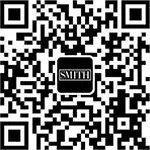Smith Makes a Dream Come True Through Friends for Wishes
For more than 40 years, Smith has built a culture dedicated to supporting and improving the lives...
Last month, the Armstrong Flight Research Center, located in Palmdale, California, hosted a NASA Social event showcasing aircraft that will be used in its upcoming Earth Venture program. NASA will be sending five airborne campaigns – which will embark in 2020 – across the United States to investigate how and why our planet is changing. Flying at about 70,000 feet (almost double the height of commercial flights), NASA’s high-altitude aircraft will follow weather patterns and test atmospheric levels utilizing custom-built instruments.
One of our global team members had the chance to take a behind-the-scenes tour of the hangar and aircraft, offering Smith an inside look at what supply chain opportunities and challenges NASA faces. Here are a few key takeaways we learned from the event and tour:
1.) Hardware obsolescence is a growing challenge across all industries.
NASA imposes a 20‐year design lifetime on most of its aircraft that are used for research. NASA designs these aircraft, often custom adapted from Boeing 747 models, to be in use for at least 20 years. During this time period, general hardware maintenance is typically required, and this is where obsolescence challenges come into play. During ongoing and long-term projects like this, it can be difficult to replace obsolete electronic components like larger case-size MLCCs and other passive components.
2.) Demand for optoelectronics will continue to rise as cameras become more advanced.
One of the most sophisticated examples of optoelectronics use is NASA’s SOFIA, the Stratospheric Observatory for Infrared Astronomy, which observes the solar system and beyond at mid- and far-infrared wavelengths. SOFIA’s telescope instruments utilize optoelectronics such as cameras, spectrometers, and polarimeters. At the consumer level, the use of optoelectronics is also continuing to grow. Smartphones that use multiple cameras are becoming the new norm and starting to cause supply constraints, with an increase in market demand for image sensors, specifically Sony’s flagship CMOS.
3.) All elements of aerospace and aeronautics technology are connected.
NASA’s cutting-edge innovation and technology efforts will continue to grow, bolstering the need for more electronic components. On NASA aircraft, smart and connected electronics are not just limited to the cockpit. From the instruments used to measure atmospheric levels to the engines powering the planes, electronic components are present across all facets of the aircraft.
Headquartered in Houston since 1984, Smith is a proud business leader in our community. We support customers across a wide range of industries, including aerospace and defense, with the electronic components they need to keep their missions moving. Upholding the most stringent quality practices while maintaining proper traceability is at the core of Smith’s foundation. We are excited to be a part of the aerospace industry’s continuous evolution.
Keep an eye out here on our Market Blog and our Twitter (@smithweb) for more industry news and analysis.
Smith Makes a Dream Come True Through Friends for Wishes
For more than 40 years, Smith has built a culture dedicated to supporting and improving the lives...
Nexperia Trade Restrictions Update: November 14, 2025
Smith’s team of experts brings a diverse wealth of knowledge and experience that helps us offer t...
Smith Receives AS9120 Certification at Its Singapore Operational Hub
The company achieves global accreditation to this rigorous aerospace standard
您可通过以下三种方式,轻松关注Smith微信公众号:
